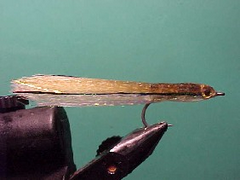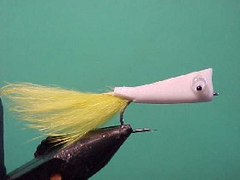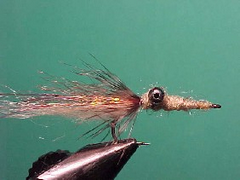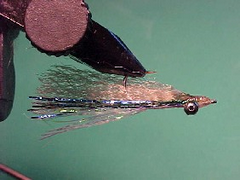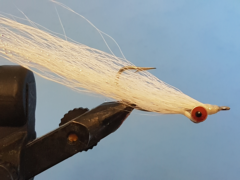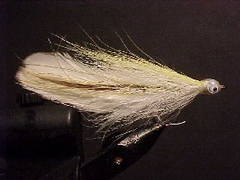Candy – salt water
Whilst the fly can be tied using materials such as polar fiber or craft fur or un-crinkled nylon materials such as ‘Fishhair’ I think that candies work better when tied with crinkly nylon fiber material such as ‘Superhair’ or ‘Supreme hair’. Also, both these materials take on a translucency when wet and I think this is one of the triggers to the fly’s success.

